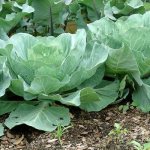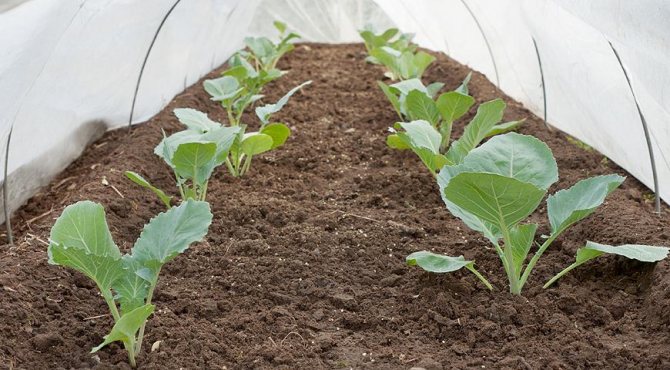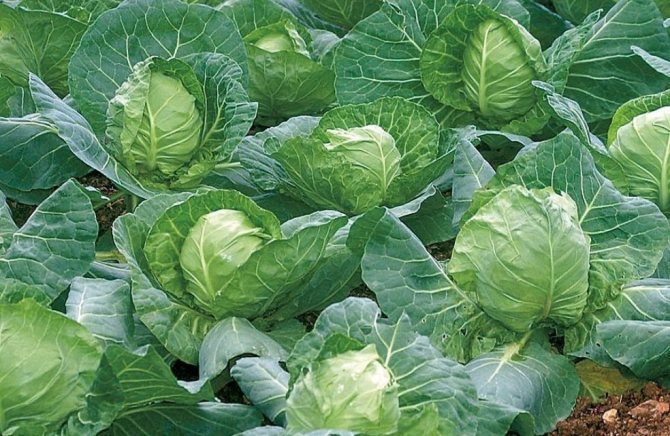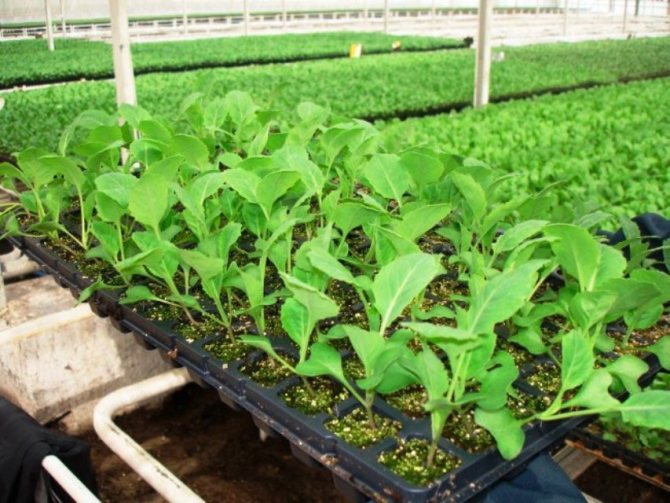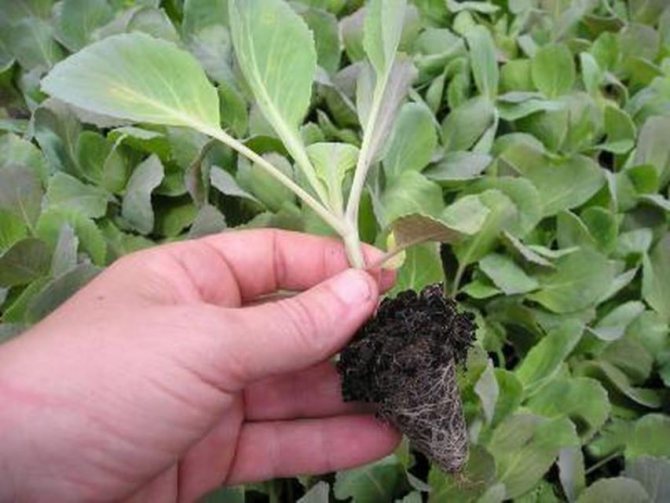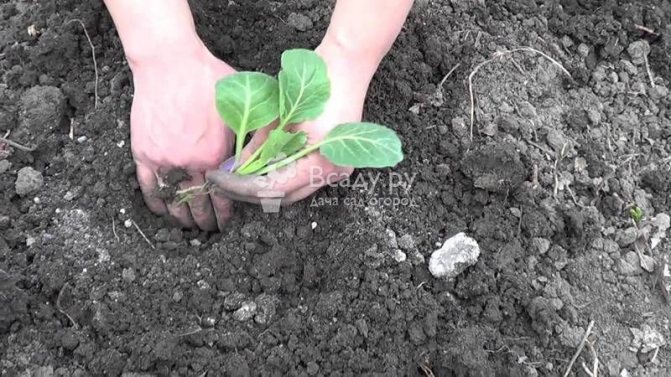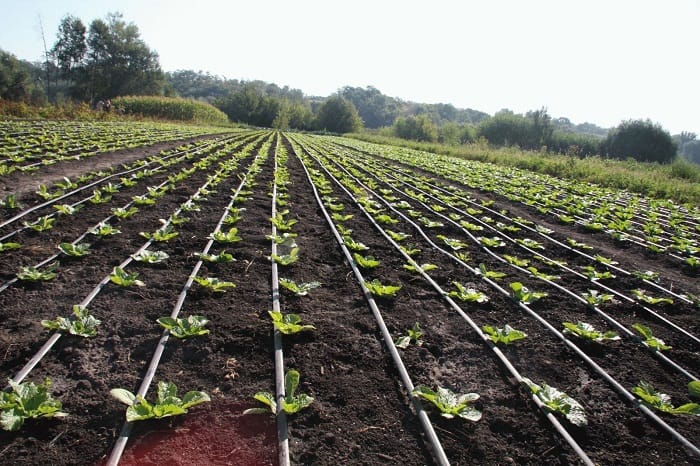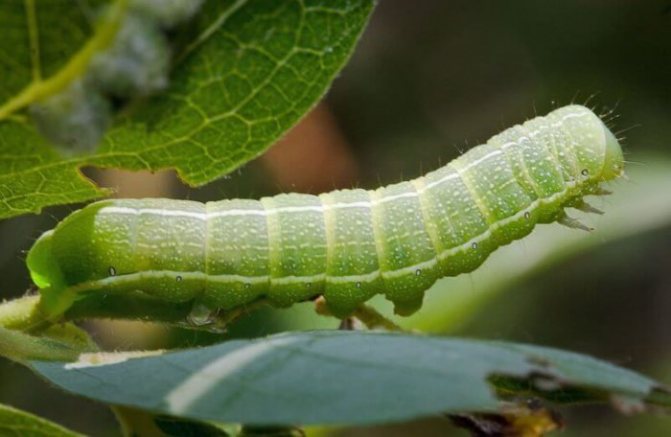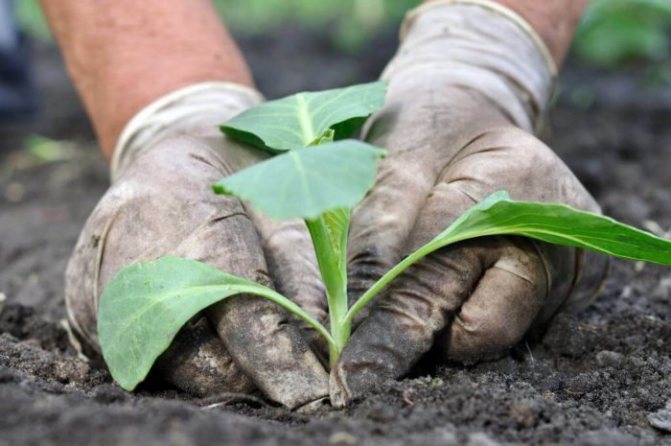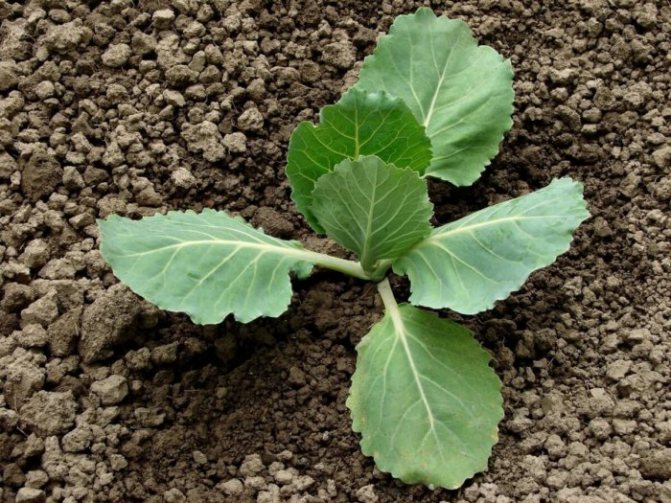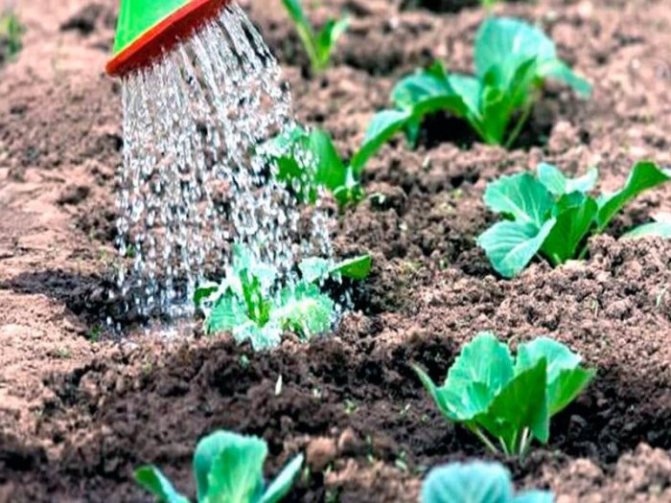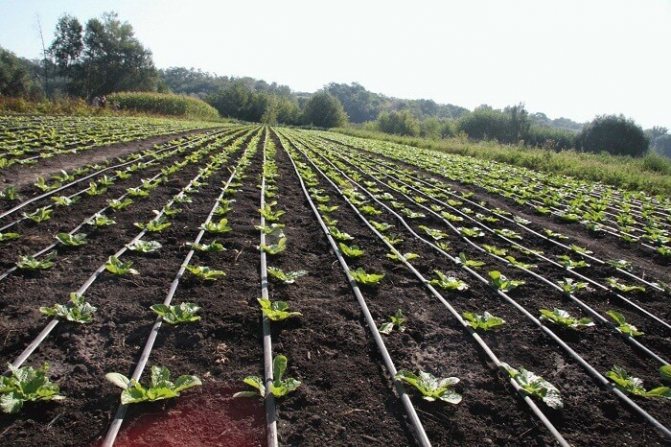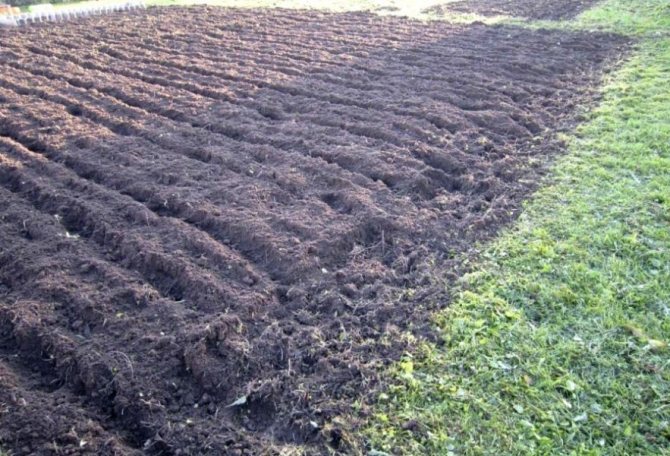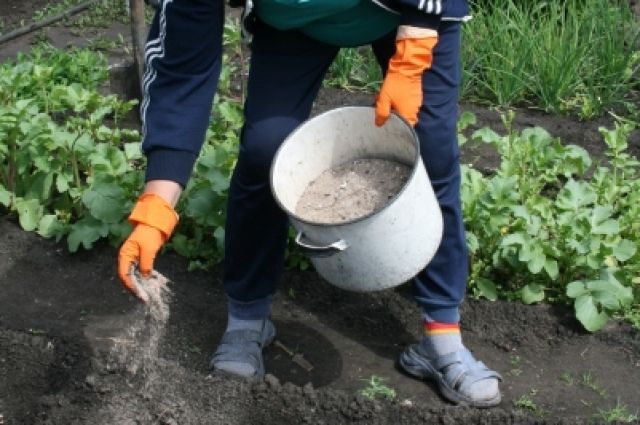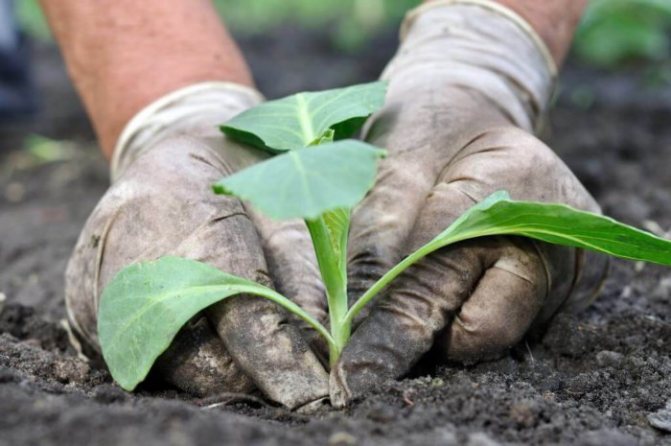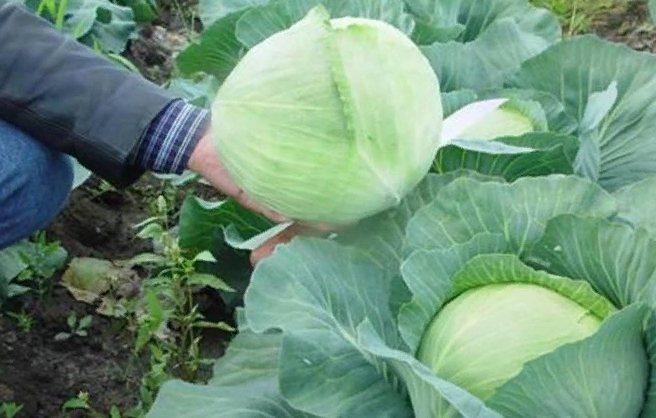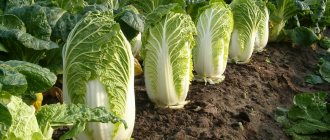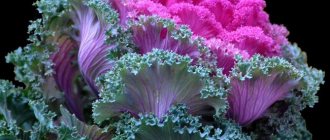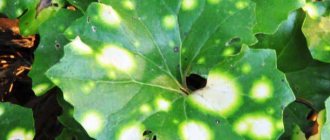Cabbage is the most common vegetable in summer cottages. Growing and caring for white cabbage in the country is not difficult, even a beginner can handle it. But in order to grow a large crop, you should know some of the intricacies of planting and growing. This is what our article is about. We will tell you when to plant cabbage for seedlings, how to properly and how to protect plantings from pests and diseases.
In modern Russian, the expression "chopping up cabbage" has acquired a stable meaning - the process of making money. However, in the very recent past, this expression meant the process of harvesting for the winter such a plant known to everyone in the garden as white cabbage.
Indeed, cabbage has a valuable set of vitamins and minerals. The basis is potassium, which is necessary for the correct functioning of the heart muscle. Cabbage juice is also used to treat gastritis. The cabbage leaves are used to extract substances used for skin rejuvenation in the beauty industry.
As you can see, the usefulness of this member of the cruciferous family is off scale. Moreover, it is useful both fresh and salted (the famous sauerkraut).
How to grow cabbage on your own site?
Division by varieties
Cabbage has gained incredible popularity due to its ease of growing and storage. She is not afraid of frost, does not need greenhouses and warm beds, she does not need hilling, pinching, pinching.
Back in the 19th century, Russian gardening breeders received medals for bred varieties at exhibitions in Paris. With excellent taste, heads of cabbage reached 70 cm in diameter. In France, heads of cabbage with a diameter of more than 1 m and a weight of 12 kg were grown. Breaking these records is not easy even now, after a hundred years.
White cabbage is divided into the following varieties:
- early ripening (ripen within 50-120 days) - June, Kazachok, Stakhanovka 1315;
- mid-season (ripen within 90–170 days) - Golden hectare 1432, Nadezhda, Sibiryachka 60;
- late ripening (ripen within 160-210 days) - Kolobok F1, Lezhky F1, Kharkovskaya winter.
The number of varieties included in the State Register of the Russian Federation is more than 400 names. In addition, many new products and foreign varieties appear on the market every year.
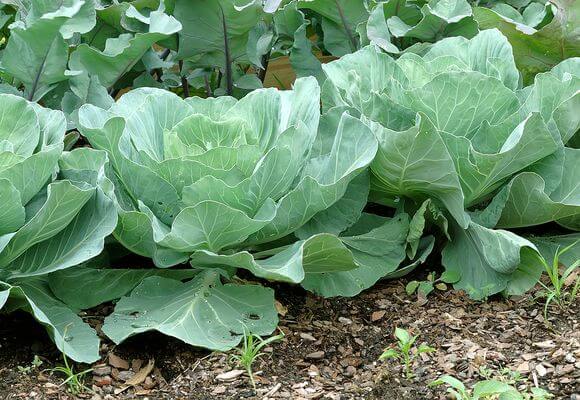
Early varieties have the following characteristics:
- low-yielding;
- the weight of the cabbage is usually about a kilogram;
- do not lie, do not go to salting;
- eaten raw, in any food, have an excellent taste.
Late varieties are characterized as:
- high-yielding;
- build up heavy and dense heads of cabbage weighing up to 30 kg (record specimens);
- eaten some time after harvesting;
- the taste improves during storage;
- used for fermentation and cooking;
- almost do not absorb nitrates from the soil.
The gardener decides which variety to choose, depending on preferences, needs and capabilities.
The sowing season begins with the purchase of seeds. Sowing cabbage begins in early spring for seedlings to increase the timing of consumption.
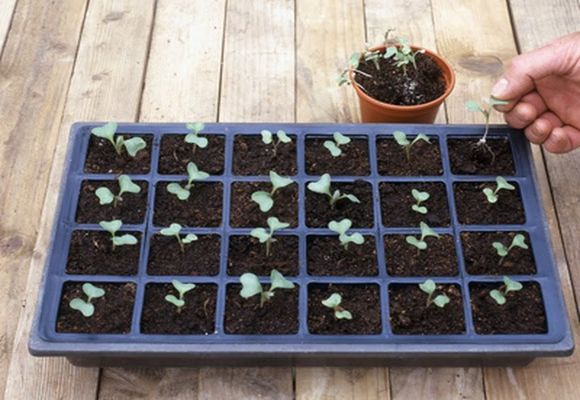

Cabbage is a biennial plant
In the first year of life, it forms a head of cabbage, and in the second year - peduncles and seeds. The agricultural technology of white cabbage is not much different from the agricultural technology of other vegetables, although it has its own characteristics. Cabbage is a cold-resistant plant, light and moisture-loving, does not like hot weather.
Before buying seeds, you need to decide what you will do with the harvest:
- If the cabbage is intended for fresh consumption in the summer season, then it is better to grow early varieties. The growth period of early varieties from germination to harvesting is up to 120 days. Plants form small heads of cabbage, but are distinguished by the tenderness of the leaves. Heads of cabbage are stored for a short time - 2-3 weeks at home.
- Cabbage intended for fermentation is characterized by loose heads of cabbage and a high sugar content. These are mainly mid-ripening (120-150 days from germination) and late-ripening varieties.
- Cabbage for storage is represented by medium-late and late (more than 150 days from germination to technical ripeness) varieties. Heads of cabbage are well stored until spring, without losing marketable qualities, but there is a minus - slight bitterness and hardness of the leaves.
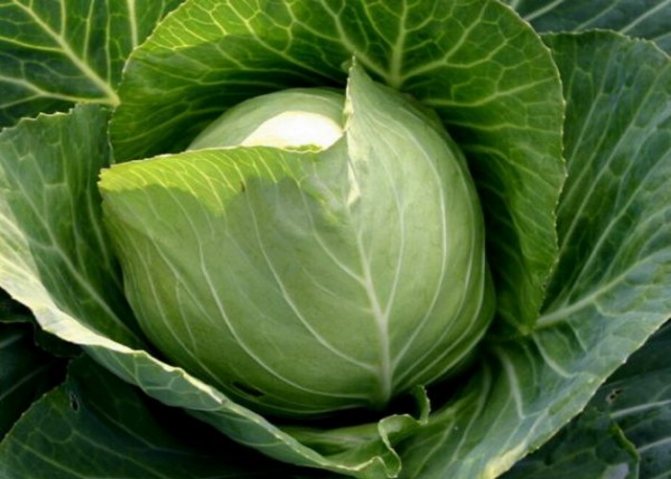

Growing cabbage of different varieties on the site, you can provide yourself with fresh cabbage until next spring.
Temperature
Cabbage seeds begin to germinate at a temperature of + 3 + 4 degrees, but the most favorable temperature for germination is + 18 + 20 degrees. Depending on the temperature, the seeds will sprout in 5-9 days. The optimum temperature for cabbage growth is + 16 + 18 degrees, at temperatures above + 25 + 30 degrees, the formation of heads of cabbage stops, the lower leaves begin to turn yellow and fall off, and the heads of cabbage crack. Cabbage tolerates short-term frosts: mature plants up to -8 degrees, seedlings up to -5 degrees.
Moisture
White cabbage is very demanding on moisture due to the shallow roots and high evaporation capacity of the leaves. The need for water changes at different stages of plant development. The most strongly white cabbage needs moisture during seed germination, after planting seedlings in the ground (during the rooting period) and during the growth and development of the head of cabbage. The optimum soil moisture for cabbage is 80%, air is 80-90%. If the humidity is low, then the stem becomes thick, the leaves are covered with a bluish bloom, and a poor quality head of cabbage forms ahead of time.
Waterlogging of the soil is also undesirable, especially at low temperatures. Under such conditions, cabbage stops growing, heads of cabbage are not formed, and it develops bacteriosis.
High air humidity provokes the appearance of fungal diseases such as blackleg.
Shine
Cabbage is a long-day plant, with prolonged illumination, development processes are faster. The optimal duration of daylight hours for white cabbage is 16 hours. Lighting is especially important for seedlings. With a lack of light, the seedlings stretch out, and in adult plants, growth is delayed and the heads of cabbage grow small.
The soil
Cabbage grows well on sandy loam and light loamy soils with a high humus content. White cabbage actively consumes nutrients from the soil, so the soil should be fertile, well-seasoned with organic and mineral fertilizers, and retain moisture well. The early varieties of cabbage are especially picky about the soil; the soil should be light, fertilized. Late cabbage grows well on moist, heavy and medium soils, with obligatory deep cultivation, filled with humus and mineral fertilizers. The acidity of the soil should be neutral or slightly acidic.
Cabbage should not be planted after cruciferous plants - they have common diseases. Good precursors for cabbage are cucumbers, tomatoes, onions, potatoes.
It is better to start preparing the beds for white cabbage in the fall. After harvesting plant residues and weeds, manure is applied to the ridge, 1 bucket per 1 sq. meter and dug up. In the spring, 2 tbsp is scattered over the garden. spoons of complex fertilizer and 2 glasses of wood ash per 1 sq. meter. Complex fertilizer can be replaced by 2 tbsp. spoons of superphosphate, 2 tbsp. tablespoons of nitrophosphate and 1 teaspoon of urea. Dig everything up.
If the acidity of the soil is increased, then it is necessary to scatter fluff lime over the beds in the fall. You just need to take into account that lime is not introduced along with manure, in this case it is better to use humus or compost when preparing the beds in spring.
Fertilizers can be applied not only for digging, but also directly into the holes. For 1 hole you need: 0.5 kg. compost or humus, 2 tbsp. tablespoons of wood ash and 1 teaspoon of nitrophoska, mix everything with the soil.
Planting seeds
You should not change the existing assortment by succumbing to curiosity and advertising. Major plantings should be of proven and reliable varieties.
Important! Currently, many seeds are hybrids, breeders promise bumper yields. However, hybrids are able to produce the declared yield only with perfect care.
The cultivation of white cabbage begins with sowing. When to sow seeds for the central regions of Russia for seedlings, you can determine by the following data:
- March 10-25 for early varieties;
- April 15-25 for medium varieties;
- March 25 - April 15 for late varieties.
White cabbage seeds can be sown dry, but it is better to carry out a series of preliminary procedures to eliminate infections and increase yields.
The seeds are dipped in hot water for 15–20 minutes before planting for seedlings, and then cooled for several minutes in cool water.
This vegetable loves loose and nutritious soil. Its roots are fibrous, they do not penetrate deep into the ground, but seek food and water at the surface. For sowing seeds, a loose mixture of peat, earth and sand in a ratio of 75: 5: 20 is suitable. Sow cabbage in cassettes or boxes.
After they are well moistened with water, covered with polyethylene and waiting for shoots. Caring for seedlings planted on seedlings consists in ensuring the optimum temperature before germination and reducing it after germination.
The optimum temperature before germination is 18-20 ° C. Then it is lowered to 6-10 ° C. Usually, for this, white cabbage seedlings are carried out to the glazed balcony from the room. A low temperature must be maintained for a week, until the first true leaf grows. Then the temperature must be increased again to 12-18 ° C.
The room where the seedlings grow must be ventilated.
2 weeks after germination, the seedlings are transplanted, the roots are cut to 1/3 of the length, burying the first leaves into the ground. Before picking, the seedlings are watered with water.
2 weeks before planting seedlings on the beds, they begin to harden it. Seedlings are taken outside for 3-4 hours, then for the whole day.
Nowadays, growing of seedlings is increasingly carried out in cassettes instead of conventional seedling boxes.
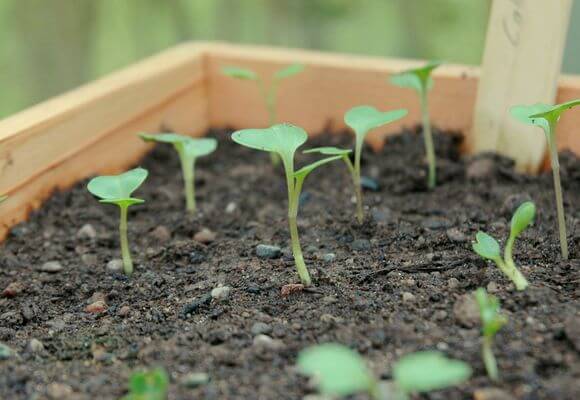

The technology for growing seeds for seedlings in cassettes is as follows:
- filling cassettes with high quality nutrient soil;
- soaking in Zircon or Epin preparations for 6 hours;
- sowing seeds in a cell to a depth of 1 cm;
- maintaining a temperature of 18 ° C before germination;
- decrease in temperature after germination;
- fertilizing with fertilizer.
This method guarantees 100% survival rate, significant seed savings, greater seedling emergence, uniformity of seedlings development, no root injury during planting, and earlier production. The plant turns out to be strong, does not get sick, gives high yields.
You can sow cabbage seeds in a seedless way. Growing from seeds in a seedless way is practiced when planting mid-season and late varieties. Sow cabbage should be in the 20th of April. By mid-May, the seedlings will be ready for replanting to a permanent place.
The nuances of harvesting cabbage
The timing of the cabbage harvest depends on the variety and maturity of the vegetable:
- early ripening varieties ripen in late June - early July;
- mid-season - by August;
- late ripening - in October.
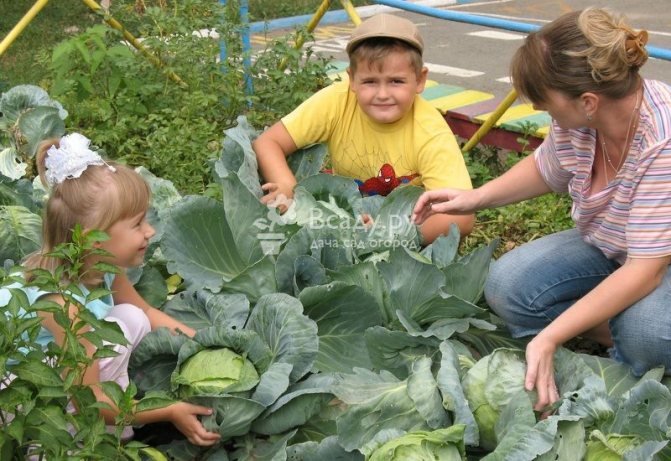

Harvesting cabbage
It is quite simple to check the maturity of cabbage heads - they become dense, crunchy with a little squeezing.Part of the crop can be harvested gradually, spending it on current needs. Mass cleaning is carried out when there are no unripe bushes left in the garden.
Advice
Late varieties of cabbage hold better when harvested in dry, cool weather. When cutting a crop for storage, you need to leave a few lower leaves and a stump, 4-5 cm long. So they will be less susceptible to the development of rot and will lie until the next harvest.
You are likely to be interested in the following topics:
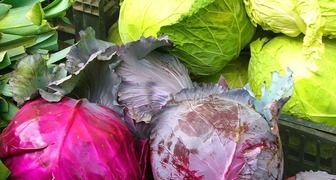

Sowing dates of seeds of mid-season and late varieties of cabbage in Russia
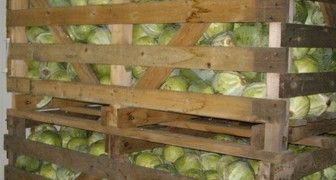

Storage rules for cabbage and beets
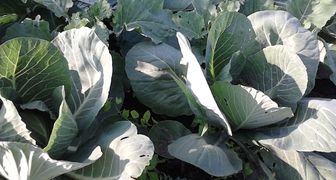

Cabbage pests and methods of dealing with them
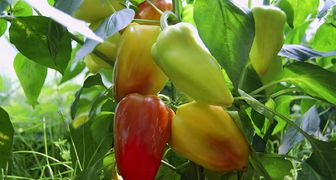

Features of spring feeding of tomato, pepper and cabbage seedlings
Growing seedlings
Every novice gardener should know how to grow cabbage seedlings. This vegetable will not cause much concern. Cultivation of cabbage seedlings begins with planting seedlings 20 cm high, with 4-7 true leaves, on the beds, at the age of:
- 45-60 days early varieties;
- 35–45 days mid-season varieties;
- 40–45 days late-ripening varieties.
Seedlings are planted in the garden in the following terms:
- early varieties are planted from late April to early May;
- from mid-May to the end of this month - late;
- mid-season from late May to mid-June.
Routine care consists of several necessary operations:
- moisture when the soil dries out;
- feeding one or two times;
- the presence of sufficient lighting for 12 hours;
- maintaining optimal temperature;
- picking with transfer to individual containers;
- hardening 2 weeks before planting in the garden.
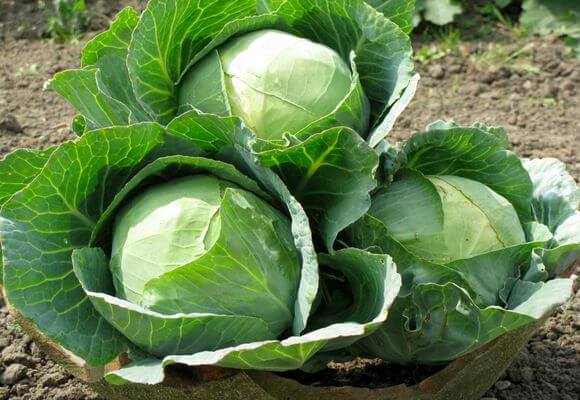

Important! Planting of seedlings begins when the temperature reaches 8–10 ° С in the afternoon.
Planting cabbage seeds for seedlings
Seedlings are planted in the prepared mixture. The capacity can serve as the most common plastic cups with a volume of 200-500 ml, at the bottom of which holes are made for excess water to drain.
In this case, cabbage seedlings do not have to dive. From above, the container is covered with a transparent film to create the effect of a greenhouse.
On average, 5 days after planting, the seeds begin to sprout. During this period, the film cover can be removed. With the appearance of the first leaf, the seedlings need to be ventilated, but drafts must be avoided.
It is very important to observe the regularity of watering, avoiding waterlogging or drying out of the soil. To do this, the soil must be periodically loosened.
Daylight hours for seedlings should be at least 12 hours - for this, sometimes you have to install additional lighting in the form of fluorescent lamps.
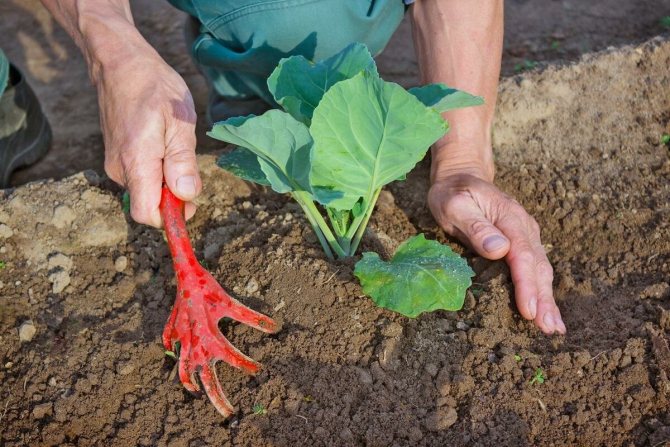

Landing in the ground
There are not many rules for planting and caring for cabbage. But you need to know them well so as not to be left without a crop. How to plant this vegetable can be understood by knowing its characteristics.
The biological qualities are as follows:
- low heat demand;
- the plant is not demanding for light;
- needs mandatory abundant watering;
- requires loose and nutritious soil;
- needs high doses of fertilizers.
It is advisable to plant cabbage on a gloomy day or in the evening, darkening it for several days from the spring sun.
Important! The approximate distance between plants for planting early varieties is 30-40 cm, mid-ripening 50-60 cm, late 60-70 cm.
This vegetable loves loose, well-cultivated soil. It is advisable to prepare the beds in the fall, digging to a depth of 20-30 cm, filling them with humus, lime, ash, and manure. If the beds are prepared in spring, then they are dug up, weeds are removed, and fertilized (ash, humus) is applied.
Watering during the season is carried out three to four times per season.
Important! Excessive moisture provokes fungal diseases, acidic soil - keel disease.
You can plant cabbage in the beds after cruciferous crops after 3 years.
Outdoor cabbage care, and possible difficulties
The cultivation of cabbage in Siberia in the open field practically does not differ in its agricultural technology from the Moscow region.It is only necessary to choose late-ripening varieties and use only the seedling method of planting, pre-hardening the seedlings. The main care for cabbage is reduced to watering, loosening and feeding.
Watering cabbage
Growing cabbage in the open field is impossible without regular watering, since it is a very moisture-loving plant. This requirement is especially relevant in the first phase of growth. Watering is carried out every 2-3 days abundantly, while the water should not be cold. When the heads of cabbage have set, watering the cabbage in the open field is gradually reduced and completely stopped a month before harvesting. This rule does not apply to early maturing varieties.
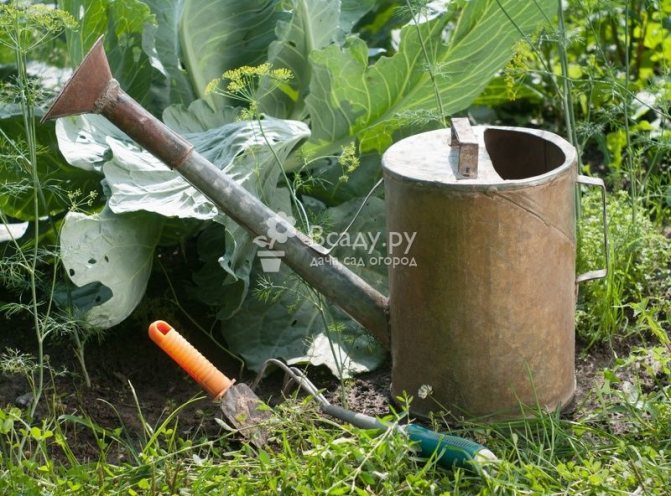

Watering and caring for cabbage
Loosening beds and hilling kaputa
To ensure air access to the roots, it is necessary to regularly loosen the soil. It is carried out after each watering. Hilling cabbage in the open field is no less important. It is carried out every 10-14 days, thereby stimulating the growth of new roots and the full development of the plant.
Fertilization in three stages
- After planting in the ground, the first top dressing is carried out after 14-16 days. The most successful fertilizer for this purpose is mullein infusion, 1 liter of which is diluted in 10 liters of water.
- Two weeks later, cabbage is fed again in the open field with the same nutrient composition.
- During the formation of the head of cabbage, a third feeding is necessary. It is carried out with potash fertilizers and urea (10 g per bucket of water).
Advice
Iodine for cabbage - feeding and protection against diseases from a home first-aid kit (40 drops per bucket of water), Iodine solution can be added every 10 days at the rate of 0.5 liters under a bush.
Diseases and pests of cabbage
Growing white cabbage in the open field, like other varieties, requires regular treatment against pests and diseases:
- A colony of aphids or cruciferous fleas can completely destroy all cabbage plantings in a matter of days.
- Fungal diseases are no less dangerous for culture.
To avoid the appearance of parasites and infections, it is necessary to treat cabbage with insecticides (Prestige, Commander Maxi, Lepidocide) and fungicides (Doctor Klop, Impact, Zoltan, Gamair), or folk remedies at intervals of 10-12 days.
Cabbage solution recipe
When fighting cabbage whitewash (cabbage), aphids and other pests, spraying with a decoction of tobacco dust gives a good result (boil 400 g for two hours in 2 liters of water, strain, add 50 g of laundry soap and dilute with water to 10 liters).
To combat slugs, baits and traps are placed in cabbage, and crushed eggshells and sifted river sand are sprinkled around the perimeter of the bed.
Possible difficulties in growing cabbage
Many gardeners are faced with a problem when heads of cabbage are not tied on cabbage. The plant stretches upward, densely overgrown with foliage. The reasons may be as follows:
- late sowing of seeds (after March 10);
- thickened plantings (thinning should be carried out);
- excessive or poor watering (the problem can be solved by regular watering by sprinkling, but make sure that there is no stagnation of moisture);
- an excess of nitrogen fertilizers (during the formation of heads of cabbage, nitrogen fertilizers are completely excluded, and phosphorus and potash are introduced).
White cabbage, cultivated and cared for in the open field for which it is carried out correctly, always gives a harvest of elastic and juicy heads of cabbage.
Care rules
Caring for vegetables consists in observing some basic rules:
- keeping the soil clean and loose;
- abundant watering;
- fertilizing with fertilizers;
- protection against attacks of harmful insects.
Many types of cabbage outdoors are severely affected by pests. After all, there are many who want to feast on juicy leaves.
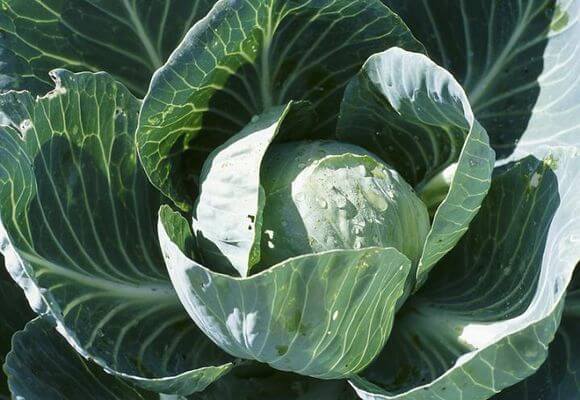

Caring for a vegetable when attacked by pests consists in carrying out protective procedures:
- dusting with ash or tobacco dust;
- collecting clutches of eggs and caterpillars from leaves;
- spraying leaves with infusions of herbs or solutions of harmless chemicals with a strong unpleasant odor (infusion of wormwood, garlic, onions, solution of ammonia, etc.);
- the use of chemical remedies in extreme cases.
No matter how many cabbage this is, there won't be much. Indeed, in addition to white cabbage, you must definitely plant Peking, colored, kohlrabi and broccoli.
Pests. Cabbage processing
A remedy for hypertension Treatment should be started when the first alarming symptoms appear, since the lack of timely adequate therapy can lead to disruption of the cardiovascular system and the brain. Today, experts recommend a new natural remedy for everyone who suffers from high blood pressure - Normaten effervescent tablets. Read more ...
The most terrible pests in the cultivation of white cabbage are slugs and caterpillars of the white woman, scoops, they are very voracious. When we have planted seedlings, in order to escape from slugs, we need to sprinkle the edges of the beds with dry mustard. This should be done for prevention, especially in a rainy summer. But from the caterpillars of the butterfly, sprinkle whites and scoops directly on the leaves with ground black pepper (literally every 3-4 days). The smell will scare off butterflies, and they will not lay eggs on plants.
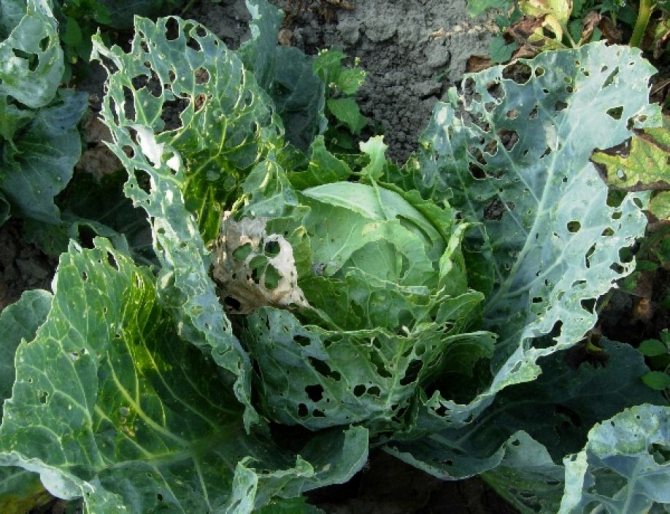

But if, nevertheless, the caterpillars are wound up, then treat the cabbage with the "Iskra Double Effect" preparation. We take a tablet, dilute it in 10 liters of water and spray it, 3-5 liters of working solution per sq. meter.
Cabbage, late varieties, are harvested in late September - early October. We leave the stump of 2-3 cm, the lower leaves are wet and yellow, we cut off so that the forks are clean, dry and well stored. The cabbage is stored at a temperature of 5-10 ° C.
See also:
Tags: agricultural technology for growing cabbage white cabbage feeding cabbage cabbage seedling
Harvest
Harvesting of early varieties begins in June. One of the most popular varieties grown throughout the country is called June.
Important! Harvesting is carried out in cool, dry weather. Collected in warm weather, heads of cabbage will quickly rot.
If you are late in harvesting, the heads of cabbage may crack. Heads of cabbage should be ripe, dry, clean. The forks are removed for storage along with the covering lower leaves and a half-cut stump.
The main harvest of vegetables is cut for winter storage at the end of September - in October.
Top dressing of white cabbage and proper care
How should you care for cabbage and how to feed it? We do the first feeding 15 days after planting the seedlings. Add to 10 liters of water a tablespoon of Agricola for cabbage, 2 tablespoons of any liquid vegetable organic fertilizer, for example, Grow Up. Stir all this well and spill it at the rate of about 5 liters per 1 sq. meter, or better for each plant, 2 liters of solution. So we shed each plant. We also do the second feeding 15 days after the first, but we will already add a tablespoon of superphosphate and 2 tablespoons of liquid vegetable organic fertilizer. The third dressing is also done 15 days after the second, take 2 tablespoons of organic fertilizer and a tablespoon of Agricola for cabbage.
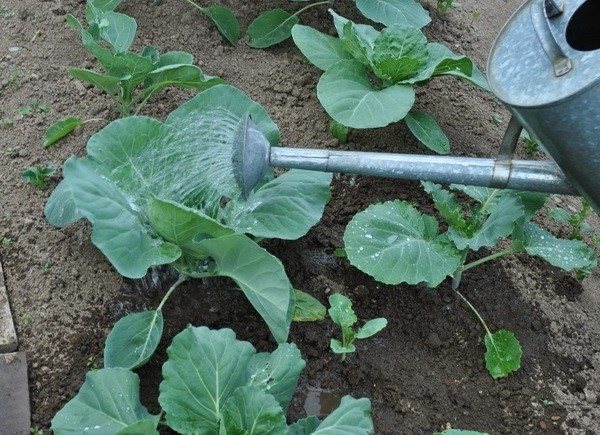

Cabbage loves water and loves watering. We water according to the following schedule: June, July 5-8 liters of water per sq. meter, next watering 10 liters. After each feeding, pour the cabbage with plain water from a watering can - by sprinkling. When the heads of cabbage are ripe, it is not worth pouring, as they can crack. The head of cabbage may crack even due to the fact that early varieties were planted, they were not removed in time, and they continue to grow.
Storage
Culinary experts all over the world call cabbage "the queen of vegetables". In China, 80% of the vegetables consumed in winter comes from it. In Russia, only potatoes can compete with it.To taste, it goes well with almost any food.
In addition to fresh and sauerkraut, cabbage is prepared in any other way: boiled, baked, fried, stewed, stuffed. Just don't smoke. Although this method of cooking vegetables was mastered by a Belgorod chef and made smoked vegetables his own in a restaurant.
Heads of cabbage are stored for 3–6 months. At the same time, their taste improves, and nutrients are not destroyed.
Methods for preserving heads of cabbage:
- on a shelf in the basement;
- suspended by a stump in the basement;
- in a refrigerator;
- in an earthen hole;
- in barrels or glass jars.
The heads of cabbage are stored in the basement at a temperature of 0 ° C, laid out in stumps up on a shelf, on a bed of straw.
Important! During storage, the heads of cabbage should not come into contact with each other, otherwise they will quickly begin to rot.
At home, forks can lie in the refrigerator for a long time, wrapped in paper or a bag.
If a good harvest has been grown, but there is nowhere to store it, you can dig a hole 1 m deep in the garden, lay the heads of cabbage there and fill them with earth. Forks are used in the spring, when it will be possible to dig out the ground. There will be enough heads of cabbage for three months before the new harvest.
Sauerkraut is much healthier than fresh cabbage. When fermented, useful lactic acid is formed in it, the presence of trace elements and vitamins doubles. Stored up to 10 months without changing its properties. These are natural canned food, invented many centuries ago by our ancestors.
Cabbage pest control methods
The main pests of cabbage are the cabbage butterfly, cruciferous bugs, and the scoop. Their active influence can quickly lead to the destruction of the plant.
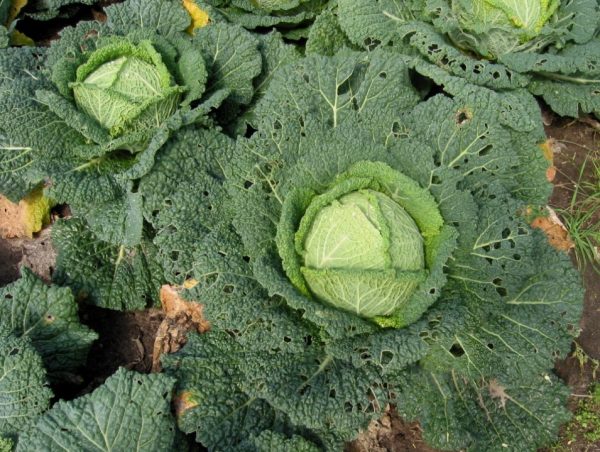

Affected cabbage
However, it is not recommended to spray crops with various pesticides, because cabbage leaves absorb all the components. For such purposes, vegetable growers use a solution of ground red pepper and mustard. As a preventive measure, you can spray the plants with a solution of vinegar and wood ash. The fight against parasites should be started at the first damage to the surface of leaves and heads.
Healing properties
Even in old Russian medical books, the medicinal properties of this vegetable were described in detail. The ancient Egyptians, Greeks and Romans wrote poetic odes to cabbage, singing its taste and considering it a medicinal plant. They believed that she maintains peace of mind and has all the healing properties.
Its composition is admired by researchers: 13 types of vitamins, 7 types of macronutrients and 5 types of microelements, fiber, sugar, pectins.
The vegetable is 91% organic water. This water has many beneficial properties:
- promotes weight loss;
- helps with a hangover;
- fights tumors;
- strengthens bones;
- stimulates the normal functioning of cells and muscles;
- is a natural anti-aging drink;
- improves the condition of the skin, hair, nails.
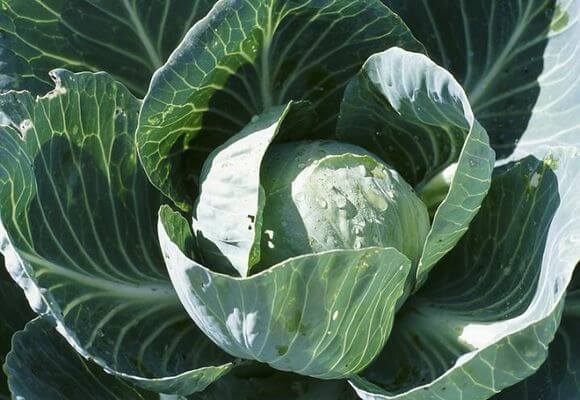

Cabbage is not only tasty, but also has many medicinal properties established by official medicine:
- antimicrobial and anti-inflammatory;
- lowers the level of sugar, bad cholesterol;
- antineoplastic agent for the gastrointestinal tract;
- low-calorie remedy, useful for obesity;
- high-vitamin remedy, helps to restore the body's strength in the spring with a deficiency of vitamins;
- a potent antiulcer, the juice helps to heal ulcers in the gastrointestinal tract, festering ulcers, wounds and burns on the skin;
- enhances the secreting properties of the body with edema and constipation.
Important! Leaves, roots and sap have healing properties.
Fertilizing cabbage seedlings
What to take with menopause? Boris Vasilievich Stulnikov, a gynecologist-endocrinologist, 40 years of experience, answers. With menopause, the hormonal background changes, so your task is to help the body survive it, avoiding ... Read continuation
In total, during the growing period, it is necessary to make three dressings:
- The first is 7-9 days after the pick.
- The second - 15 days after the first.
- The third - 2-3 days before planting in the ground.
Add 1 liter.water a teaspoon of "Agricola" for cabbage - a complex mineral fertilizer, which contains phosphorus, potassium, nitrogen and trace elements. To this composition you also need to add a teaspoon of any liquid organic fertilizer, it can be "Effecton", "Vegeta", "Grow up", etc. We carefully feed our seedlings from a small teapot.
We will do the second feeding in 15 days. Watering the seedlings should be moderate.
How to determine the maturity of cabbage
Since the range of months in which the harvest takes place is quite large and extends from July to October, it is important to learn to recognize the maturity of cabbage by external signs. There are few such signs, but they provide valuable information about the readiness of the fruit to be removed from the soil.
Table 1. Signs of ripe cabbage
| Criterion | Description |
| Hardness | The first thing to do with a supposedly ripe cabbage is to touch it. If it has reached the size characteristic of this variety, and its head has hardened, it means that the vegetable is ready for use. |
| Cessation of growth | If you notice that the heads of cabbage have stopped developing, then this is also considered a sign of their maturity. Cabbage that has stopped growing should be removed as soon as possible, otherwise cracks may go through the head. This is especially true for medium and early varieties. |
| Yellowing of the lower leaves | The yellowness and drying of the leaves indicates that the development of the cabbage is complete and now the vegetable has begun to store nutrients |
Diseases of cabbage
Some cabbage diseases can spread so quickly that a slight delay on your part could result in the loss of the entire crop. We will tell you what cabbage is sick with, as well as how to process cabbage in order to save it from death. One of the most dangerous plant diseases is keela, a common fungal disease that affects early varieties of white cabbage and cauliflower even at the seedling stage: growths form on the roots of seedlings that disrupt the nutrition of young plants, which is why the seedlings lag behind in development - they do not even form an ovary. Remove diseased plants from the site along with an earthen clod, and sprinkle the place where they grew with lime.
It is not yet possible to grow cabbage in this place, but other plants can grow without any risk, since keela affects only crucifers.
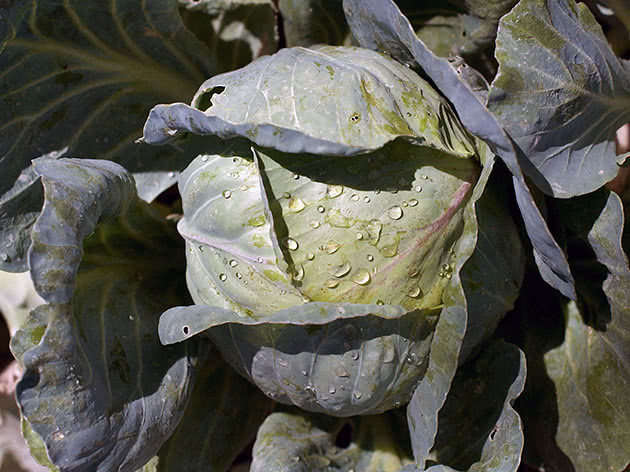

A common occurrence is the defeat of cabbage in the seedling phase or already on the garden plot with a black leg, a fungal disease of the root collar at the base of the stem. These parts of the seedling turn black, thinner, rot, the plant slows down and dies. Such seedlings are not planted in the ground - they will die in any case. The soil in the area with the cabbage that died from the black leg needs to be replaced, because it is unsuitable for growing cabbage. As a prophylaxis of the disease, the seeds are treated with granosan before planting in accordance with the instructions, for the treatment of 100 seeds, approximately 0.4 g of the drug is needed, and fifty percent Thiram (TMTD) is added to the soil at the rate of 50 g per m².
Sometimes cabbage suffers from downy mildew. Usually the causative agents of the disease are found in the seeds, which is why pre-sowing treatment is so important. The disease manifests itself in wet weather on the outer leaves of cabbage with dull red-yellow spots. As a result of the development of the disease, the leaves turn yellow and die off. As a preventive measure, seed dressing is used before planting with Thiram or Planriz. Hydrothermal treatment also gives good results - soaking seeds in hot water (about 50 ºC) for 20-25 minutes.
If preventive measures were not taken, or they did not help, you will have to resort to processing cabbage with garlic broth: add 75 g of finely chopped garlic to 10 liters of water, leave for 12 hours, then bring the infusion to a boil, let cool and spray the plants. If this measure also fails, treat the cabbage with a two to three percent solution of Fitosporin-M.If necessary, the treatment can be repeated after two to three weeks. But keep in mind that you can treat cabbage with a fungicide only before the head is tied, otherwise there is a danger of accumulation of pesticides in the leaves.
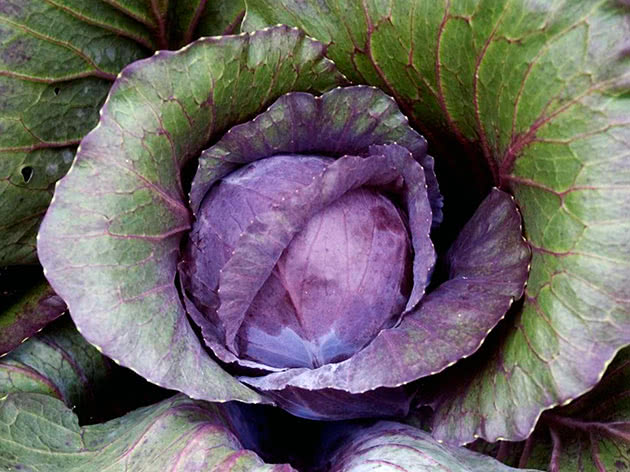

White and gray rot also give gardeners a lot of trouble. White rot develops under the condition of a combination of low temperature with high air humidity and is manifested by mucousness of the outer leaves of cabbage, between which a cotton-like mycelium of white color with black sclerotia ranging in size from one millimeter to three centimeters is formed. A white-rotted head of cabbage rots in storage, contaminating neighboring forks.
Gray rot also appears during storage: the petioles of the lower leaves are covered with a fluffy mold with black beads of dots. Pre-sowing disinfection of seeds, high agricultural technology, preventive cleaning and disinfection of storages before laying cabbage, compliance with the conditions for its storage, timely detection of the disease and cleaning of affected areas will help to protect the cabbage harvest from these diseases.
A dangerous disease is Fusarium wilting, or the yellowness of cabbage, which is caused by the Fusarium mushroom. Cabbage is affected by the disease even in the seedling period, and the death of young plants from this scourge is sometimes 20-25%. Symptoms of the disease are the loss of turgor by the leaves and the appearance of yellow foci on them. The development of leaves in places of yellowing slows down, diseased leaves fall off. In order to prevent the spread of the disease, the affected plants are dug up along with the roots and burned, the soil is steamed or changed. Autumn and spring preventive treatment of the site with a solution of copper sulfate helps to destroy the fungus (5 g of the drug is dissolved in 10 liters of water).
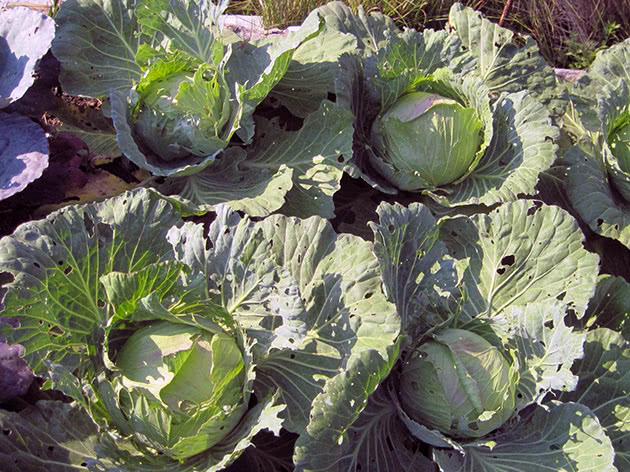

Rhizoctonia is another fungal disease of cabbage that develops with strong fluctuations in temperature (for example, from 3 ºC to 25 ºC), air humidity (from 40 to 100%), soil acidity (pH from 4.5 to 8 units). The disease affects the root collar, from which it turns yellow, dries and dies, the roots turn into a washcloth and the plant dies. Infection occurs already in the open field, the disease continues to develop even in storage. As a preventive measure, spraying of the soil is used before planting cabbage in the ground with copper oxychloride or preparations that contain it.
Features of growing in the regions
The climatic conditions of different regions determine some of the features of cultivation and care.
In Ukraine
The climate of Ukraine is moderately continental with a gradual increase in continentality from west to east. With the exception of the western mountainous regions, the territory consists of steppe and forest-steppe. Hot dry winds often blow. Periods without precipitation sometimes reach 2-3 months, but it sometimes happens that it rains continuously for a month. Colds come rather late, sometimes in November the temperature does not drop below 10 ° C.
Under such conditions, cabbage of different ripening periods grows well - from super early to late. Typically, seedlings are grown in greenhouses. Planting time in open ground begins in early May. Sometimes they use agrofiber shelter. This method is mainly used for seedless cultivation. In this case, the seeds are sown in mid-April. In dry seasons, the frequency of watering is 2-3 times a week. The use of drip irrigation systems is quite popular in Ukraine, since it significantly reduces labor costs and water consumption for irrigation.
In central Russia
The moderate continental climate of the middle zone is most favorable for cabbage. Recently, even varieties with late ripening periods (up to 170 days) have been grown here. In the first weeks after planting seedlings, the beds are usually covered with foil or agrofiber. For seedless cultivation, varieties and hybrids are used:
- Glory,
- Gingerbread man,
- Valentine,
- Guarantor, etc.
In outskirts of Moscow
The climate of the Moscow region is also moderately continental, but it is distinguished by a small number of sunny days - there are two times less of them than cloudy ones. Accordingly, the humidity is higher. Such conditions are favorable for growing cabbage. Some instability of the weather in spring creates certain difficulties in the early stages. Gardeners of the Moscow region often use warm beds for growing seedlings, which are prepared in the fall. Depending on weather conditions, seedlings are planted in open ground in late April - early May. For this region, varieties with ripening periods of up to 150 days are suitable.
In Siberia
For growing cabbage in Siberia, varieties are chosen from early to mid-late. Among many others, Vyuga and Nadezhda stand out, which were bred in the Altai Territory at the West Siberian Experimental Station specifically for the conditions of Siberia. The qualities of both varieties are similar - both have good taste, density and uniformity of heads of cabbage in the range of 2.4-3.4 kg. Hope is often used for salting - it is harvested in August 120 days after germination. The blizzard is removed a month later and stored in basements, where it can be stored until spring.
Seedlings are grown in polycarbonate greenhouses and planted in open ground in mid-May, covering for the first time with spunbond in arcs. Early and ultra-early varieties are sown for seedlings in early and mid-March. The reckless method is occasionally used by individual enthusiasts with varying success.
In the Urals
This region is characterized by sharp temperature changes and unstable weather conditions. In May, it can be hot during the day, and at night the frost reaches -10 ° C. In some places, frosts begin in August, and snow falls in September. In this regard, gardeners are trying to grow seedlings in greenhouses and in warm beds, planting them in open ground in mid-May under a cover of dense (60 g / m2) spunbond. Historically, the Losinoostrovskaya 8 variety is popular in the Urals, as well as the Siberian varieties Vyuga and Nadezhda. But recently, modern hybrids (Megaton, Atria, Aggressor, etc.) are increasingly attracting vegetable growers in the Urals.
In the Far East
Sharp temperature changes, frosty winters and cool summers are characteristic of the Far East. In the first half of summer, when the setting and intensive growth of heads of cabbage occurs, it can be hot, so there is a need for frequent watering. The second half of summer and the beginning of autumn are often characterized by an increased amount of precipitation, which leads to the development of various fungal diseases.
The popular varieties here are those with a short growing season, and are resistant to cracking and disease. Along with the tested ones (Blizzard, Glory, Gift, June early), modern ones are gaining popularity:
- Aggressor,
- Cook,
- Natasha,
- Sugar ball,
- Artost,
- Primorochka and others.
When grown on small slopes, cabbage is planted in ridges that provide a drain of rainwater. In the lowlands for planting, high ridges are formed, preventing stagnation of moisture at the roots.
Cabbage plant - description
Agriculture garden cabbage (Latin Brassica oleracea) - a biennial plant with a tall leafy stem, bare gray or bluish-green leaves. The lower fleshy, large, petiolate lyre-pinnately dissected leaves, adjoining each other, form a rosette - a head of cabbage around the stem, the upper leaves are oblong, sessile. Large flowers make up a multi-flowered raceme. Cabbage seeds are also large, dark brown, spherical, about 2 mm long.
Cabbage contains mineral salts of calcium, potassium, sulfur and phosphorus, fiber, enzymes, phytoncides, fats, vitamins A, B1, B6, K, C, P, U and others. According to some scientists, the cabbage comes from the Colchis lowland, where similar plants still grow in variety, called "kezhera" by the locals.The type of cabbage includes such well-known varieties as white and red cabbage, as well as cauliflower, Savoy, Brussels, Portuguese, kohlrabi, broccoli, Peking, Chinese and kale.
- Rosemary: growing from seeds at home and outdoors
Soil requirements
The future harvest and the quality of seedlings depend on the soil. You should pay attention to the acid-base balance of the soil: it should not exceed 4%. If the level is much higher, then you need to process the land with lime.
- the crop in question is not planted after radishes, tomatoes or beets: these vegetables negatively affect soil fertility;
- preference is given to areas where cucumbers, peas, beans or potatoes were previously grown.
- choose only fertile soils, they should contain a large amount of peat; preference is given to loose soil without clay.
Features of white cabbage, a brief description
Cabbage is one of the most popular vegetable crops grown around the world. Some historical sources claim that people cultivated this vegetable as early as the third millennium BC. Since that time, the popularity of the product has only increased, as has the number of varieties of the culture itself, among which white-headed varieties are especially in demand on the territory of the former USSR.
White cabbage is a plant with a two-year development period. During the first year of its life, a round, elliptical or elongated head of cabbage (depending on the variety) is formed from the leaves, in which nutrients, trace elements, vitamins and moisture necessary for the further development of the bush accumulate. In the second year, the plant shoots a testicle arrow. Yellow inflorescences grow on it, turning after pollination into pods with seeds.
Among the biological features of white cabbage, the following points stand out:
- The average height of a bush of this culture is 30-50 cm. The seed plant can grow up to 160 cm.
- The weight of a head of cabbage varies from 300 g to 4 kg.
- The maturation period of the heads, depending on the variety, is from 80 to 150 days.
- The forks are formed from rounded leaves. Each leaf has a waxy coating on the surface, it can be smooth or wavy at the edges.
- The optimum temperature for crop growth is 13-18 degrees. In addition, for full development, the plant also requires a lot of moisture and good lighting throughout the day.
This vegetable is highly regarded in cooking. It is consumed fresh, fermented, used in various salads, soups, hot dishes. For the body, cabbage is useful because of its high content of fiber and vitamins C, B, A. In addition, it also contains phosphorus, potassium and a number of other trace elements.
Seed preparation
Not every gardener undertakes pre-treatment of seeds - if desired, they can be immediately placed in the soil, bypassing all preparations. However, if you want to make sure that the planted seeds will sprout, do some magic on them:
- Dip the seeds in fifty-degree water for twenty minutes to warm them up;
- Transfer the seeds to cold water for five minutes to strengthen the immunity of the planting material through a little hardening;
- Immerse the seeds in a solution prepared using growth stimulants (Epin, Silk) for several hours. It is possible to germinate seeds without the use of stimulants, but this will take much longer.
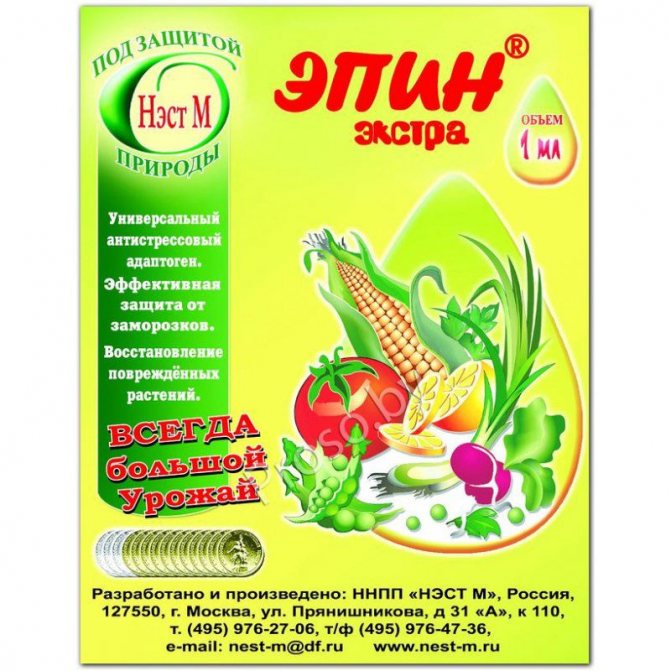

Adaptogen Epin is considered a universal remedy that facilitates the adaptation of a plant to new conditions.
Important! There are varieties whose contact with water before planting is undesirable. Therefore, before processing the seeds, read the instructions that come with them in detail.
Rules and schemes for planting early varieties of cabbage
What you need to know about cabbage before you start planting:
The vegetable has a two-year development cycle.In the first year, surebets are formed. Usually round or slightly elongated, with a slight waxy coating on green, tough leaves. All nutrients and useful substances are accumulated in the head of cabbage.
The next year, the cabbage shoots an arrow - a testis, on which yellow flowers bloom, collected in spike-shaped inflorescences. The flowering of cabbage does not give aesthetic appeal. The flowers are small and inconspicuous in appearance. After pollination, fruits with seeds are formed.
Secrets of a good harvest:
| Pick-up location
|
| The soil
|
| Fertilizers
|
| When to plant cabbage in open ground
|
| When ripe
|
Planting seedlings or seeds step by step:
- The ideal weather is a warm, cloudy day.
- Prepare planting holes. The distance between the beds is 40–45 cm, between the holes is 30 cm, the depth of the planting pit is 3 cm.
- Pour some warm water at the bottom of each well, wait until it is absorbed.
- Dip a seedling into the hole along with an earthen clod. Sprinkle with earth gently. If we sow seeds, put 3-4 seeds in each hole, sprinkle with earth on top. Press down slightly with your palms.
- Water the wells carefully, sprinkle on top with a thin layer of dry earth.
- As germination progresses from the emerged seedlings, choose one, the strongest. Delete the rest.
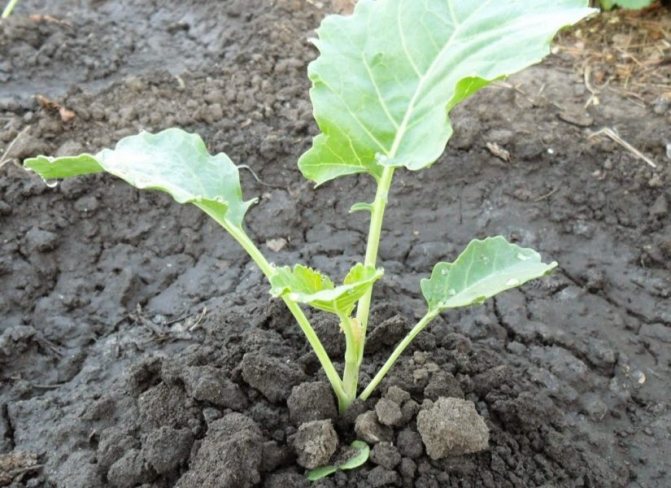

When planting, it is important to ensure that the first leaf remains above the soil surface.
Whether or not to soak the seeds before planting in the garden:
As my experience and several experiments have shown, it is better not. Two iron -clad arguments for no-soak planting:
- The point of soaking is to make the seeds sprout faster. But shoots of early cabbage and so appear a maximum of 7-8 days after planting (very quickly). It turns out that there is no benefit.
- If the sown soaked seeds cover return frosts or a strong drop in temperature, it is likely that the plant will stop growing and simply begin to rot.
Video how to plant cabbage:
How to choose the right variety?
Before choosing an early or late variety at random, it is advisable to study the qualities that distinguish cabbage of different ripening periods:
- The early varieties have very tasty leaves, perfect for both salads and vegetable soups, but their age is very short.By the fall, such cabbage is already beginning to deteriorate;
- Medium varieties, by and large, are also designed for quick consumption, but they can be pickled, which will significantly increase the shelf life of the crop;
- Late varieties are great for long-term storage. Subject to all conditions, such cabbage can sometimes survive the winter.
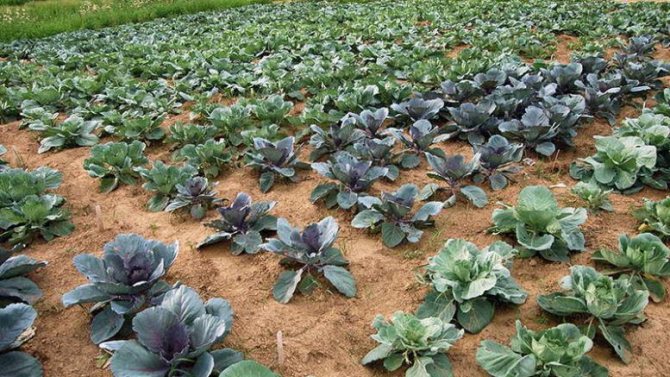

When choosing a variety, make sure it is compatible with the climatic conditions of your region.
When choosing a variety, first of all, you should start from the ripening time of the vegetable. Not every gardener can afford, for example, the Storema F1 variety, which will be ready for harvest only four and a half months after planting in open ground.
Late varieties feel better in the southern regions of Russia, gardeners of the middle lane often prefer medium and early varieties. They are less weighty, but they are capable of producing stable yields in not the warmest and most comfortable conditions.
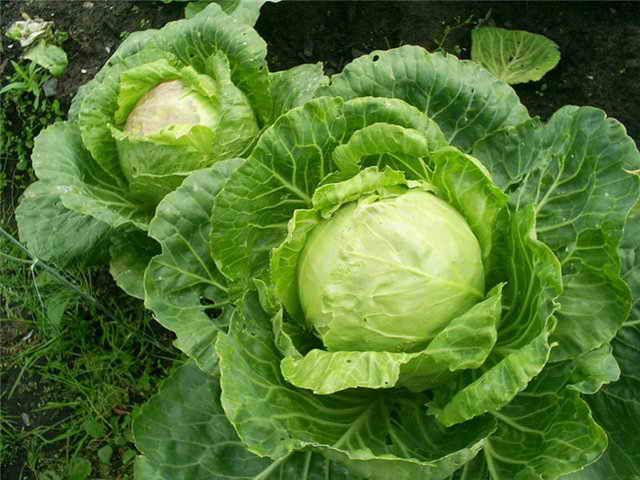

Information on varieties suitable for your specific region can be found online
There is also such a concept as zoned varieties intended specifically for Moscow, Yaroslavl and other regions. They are most likely to produce good yields with minimal maintenance.
You can read more about the varieties of white cabbage and the peculiarities of their cultivation on our portal.
Seedling preparation
It is better to give preference to the seedling method of planting. To begin with, they are determined with seeds. They can be bought at a specialty store or used at home. Your own material should be properly processed:
- Place in warm water (about 60 ° C).
- Rinse thoroughly under running cold water.
- Treat with disinfectants and growth stimulants: oxychom, manganese solution or Bordeaux liquid. The seeds are soaked for 20-30 minutes: this is enough to destroy all bacteria and microorganisms.
- Rinse under running water and place in the freezer.
The ideal time for sowing seeds is mid-March. It is better to plant seeds in separate containers: this significantly reduces the risk of damage to the root system when transplanted into open ground.
Optimal conditions for seed germination
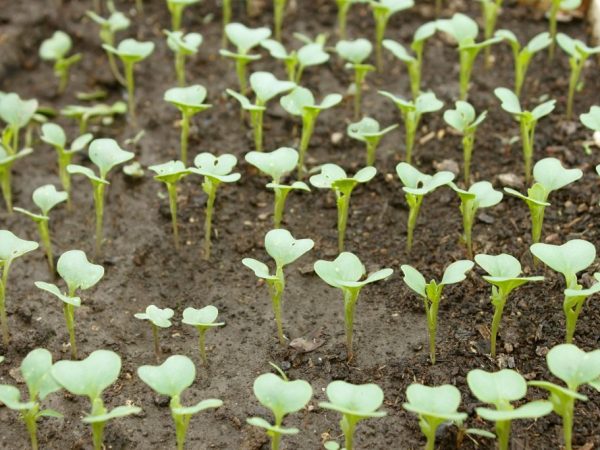

Seedlings must be hardened
Until the first shoots begin to form, a temperature of about 22 ° C should be observed in the room. After 2 weeks, it should be lowered to 10 ° C. From the moment the leaves begin to form, the temperature is raised again to 18 ° C.
After the leaves appear, containers with seedlings are placed on the windowsill of the sunny side of the house. Every day, the containers are turned on the opposite side to the street. This allows the seedlings to form evenly.
When 2 pairs of leaves are formed on a plant, it is taken outside daily. The first few days, the seedlings of white cabbage should be outside for no more than 30 minutes. Every day, the ventilation interval is increased to harden the plant for future planting in open ground.
Early cabbage varieties
Early cabbage differs from mid-season and late varieties in relatively small size, slightly loose internal structure and amazing delicate taste.
They demonstrate good resistance to light frosts and mature in 70–110 days, which makes it possible to grow crops in northern regions with short, cool summers.
The best varieties early white cabbage (name and description):
Golden hectare
|
Dumas f1
|
Transfer f1
|
June
|
Kazachok F1
|
Gribovskaya
|
Tobia F1
|
Present
|
Crops care rules
After the completion of the planting stage, in order to obtain seedlings, the crops must be provided with comfortable conditions. The air temperature in the room, the amount of light, and the observance of optimal humidity are important here.
For seedlings to germinate, the temperature should not be lower than +5. After the greens appeared from under the ground, the temperature should be increased to at least twenty heat.
Not all seedlings can ascend. But if everyone has ascended, and their frequency is less than 3-4 cm, they should be thinned out. During thinning and a week after, the optimal temperature regime is +16/18 degrees.
Two-week-old seedlings dive. A landing pattern is used, special cassettes can be used. The seedlings are immersed in the soil mixture up to the cotyledon.
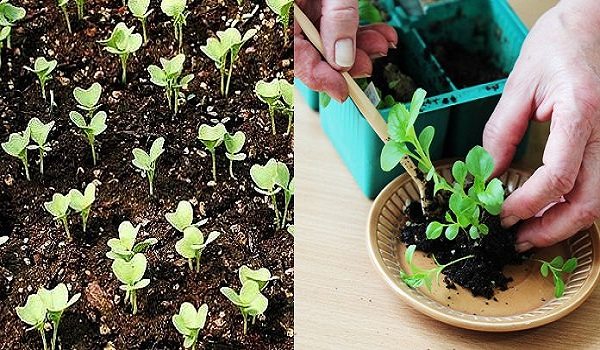

Pickling cabbage seedlings
Monthly seedlings dive again. This time they use cups, you can use peat ones. The main thing is that the diameter is at least five centimeters.
Before picking, the rhizomes are treated against fungal diseases. A weak solution of copper sulfate or any drug from a specialized store according to the scheme is used. At the time of transplantation, the air temperature is +20.
Double picking can be avoided by planting seedlings directly in pots, but using this technique, the root system will be much stronger, and the result will be better. At the time of transplantation, it is not necessary to water the seedlings abundantly, with an excess of moisture, at this stage, cabbage is susceptible to a number of diseases.
An important condition for growing high-quality seedlings is the availability of proper lighting. An ordinary fluorescent lamp can come to the rescue.
Harvesting and storing cabbage
Three weeks before harvesting, watering of cabbage is stopped - this measure stimulates the accumulation of fiber in the forks, which contributes to better storage of cabbage. When the night temperature drops to -2 ºC, harvesting can begin. Do not delay harvesting, because at a lower night temperature, the heads of cabbage freeze, which negatively affects their keeping quality. Dig up the cabbage along with the root, sort it out, setting aside the small heads that were consumed by beetles or rotted - this cabbage cannot be stored, you will have to eat it or pickle it. Cabbage suitable for storage is folded under a canopy for a day so that it dries up and slightly winds up, then the stumps are cut off from it 2 cm below the head of cabbage, leaving 3-4 covering green leaves on it. The cabbage can now be placed in storage.
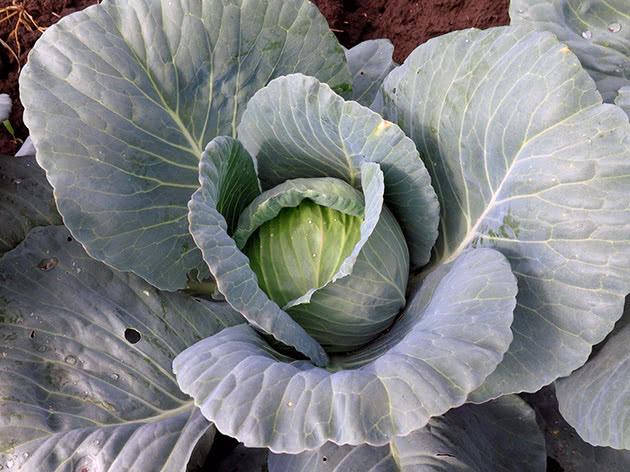

It is best to store vegetables in a cellar - there, as a rule, high humidity, and the temperature does not drop below zero. If the temperature in the cellar, moreover, does not rise above 4-6 ºC in winter, then this is almost an ideal storage for cabbage, since the optimal conditions for storing cabbage heads are air temperature from -1 to +1 ºC, and humidity from 90 to 98%. But first, you need to put things in order in the room: there should be no mold on the walls, despite the high humidity, and debris on the earthen or cement floor. It is advisable to whitewash the walls with a solution of quicklime, after which the cellar is fumigated with sulfur. Take care of good ventilation as well. If there is no ventilation system, you will have to ventilate the cellar well at least once a month.
Cabbage is stored in a single layer on shelves, as well as in a folded pyramid on wooden boards or hanging, wrapped in newspaper. In order to keep the cabbage fresh as long as possible, gardeners resort to some tricks that we are ready to share with you:
- you can tie the heads of cabbage in pairs by the stumps and hang them from the ceiling on the poles. In this position, there will be air access to the heads, they can be easily inspected for damage;
- store cabbage in lattice wooden boxes placed on stands or on shelves - the main thing is that they do not stand on the floor;
- heads of cabbage wrapped in paper are placed in a plastic bag without tying it, and hung from the ceiling or placed on a shelf;
- put the head of cabbage in a ten-liter bucket with earth, then cover it with earth on top and put the bucket in the cellar. Sand can be used instead of earth.
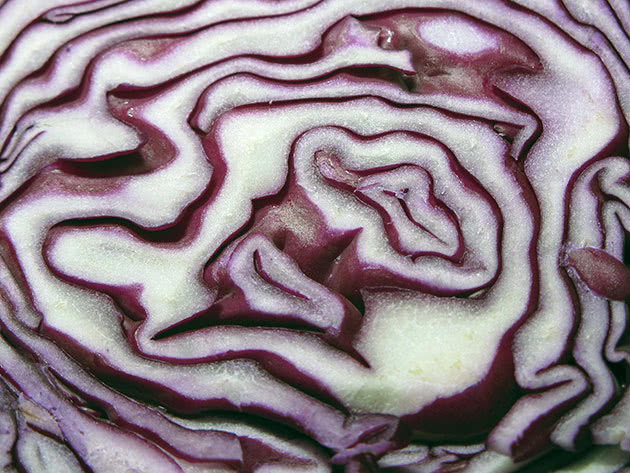

There are a couple more storage methods, but for them the root of the cabbage is not cut off, but the covering leaves, on the contrary, are removed. After that, the heads of cabbage are suspended by the roots in a draft and slightly dried. When the upper leaves dry up, the heads of cabbage are moved into the cellar and, tied in two, are hung by the roots from the ceiling. Or they immerse the head in a clay mash of the consistency of pancake dough (no cabbage leaves should be visible through the layer of clay), then let the clay dry by hanging the head of cabbage, and take it to the cellar, where it is also hung from the ceiling. We have described for you ways to store white and red cabbage. Cauliflower is stored only in a suspended state, having previously wrapped the heads in paper.
You can, of course, store cabbage in the refrigerator by wrapping it in a paper towel and placing it in a loosely tied bag, but there is not much space in the vegetable section, and the shelf life of cabbage in the refrigerator is no more than two months.
Why white cabbage?
Yes, why did this cabbage become the most popular with us? It was started to cultivate more than 4000 years ago by the ancient Egyptians. Then the vegetable gradually migrated to European countries and Russia, at the beginning to the southern regions, then spread further.
Of course, overseas varieties were grown first. Then scientists breeders began to breed by crossing and selection, already their own varieties, which are more suitable for our climate.
As a vegetable crop, cabbage has spread rapidly due to its ability to store it in winter. In sauerkraut, it turned out to be a very valuable source of vitamins, sauerkraut brine restored strength and helped seriously ill patients to recover.
Now we already know that white cabbage is the champion in the content of ascorbic acid and vitamin U, which can cure many diseases of the stomach. It began to be considered a dietary product and used in folk medicine, even cosmetology. Therefore, she is rightfully called the "queen of the beds".

